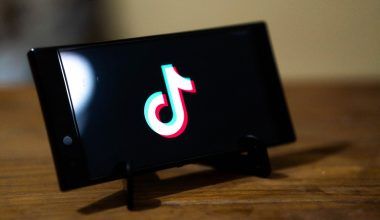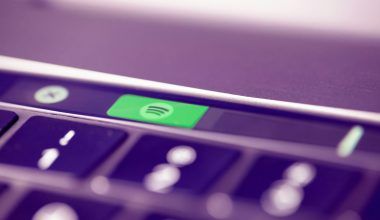When you think of music streaming, Spotify is probably one of the first platforms that comes to mind. It has become a giant in the music industry, connecting artists to listeners worldwide. But have you ever wondered how Spotify pays artists? This question has sparked many debates, and today, we’re going to break it down in a simple and relatable way.
What Is Spotify’s Payment Model?
Spotify operates on a streaming model, which means artists get paid for every stream of their music. However, the way Spotify pays isn’t as straightforward as it might seem. The platform doesn’t pay artists directly. Instead, it pays rights holders, which could include record labels, distributors, or independent artists who own their rights. These rights holders then share the revenue with the artists.
Spotify uses a system called pro-rata distribution. This method calculates payments based on the total number of streams on the platform. The more streams your music gets compared to others, the larger your slice of the revenue pie.
How Much Does Spotify Pay Per Stream?
One of the most common questions is: how much does Spotify pay per stream? The answer isn’t fixed. On average, Spotify pays between $0.003 to $0.005 per stream. This means an artist needs roughly 250 to 300 streams to earn one dollar. While this might seem small, the numbers can add up for popular songs that receive millions of streams.
But why is the pay per stream so low? It’s because Spotify has to split its revenue among various stakeholders, including songwriters, publishers, and the platform itself. Additionally, Spotify offers both free and premium plans, and the revenue from ads on free accounts is lower than that from paid subscriptions.
Who Benefits the Most?
In Spotify’s current model, major record labels and top-charting artists tend to benefit the most. These artists receive a significant number of streams, resulting in higher payouts. Independent artists, however, often struggle to make substantial earnings unless they have a large and dedicated fan base.
This has led to discussions about whether Spotify’s model is fair. Some argue that it favors big names in the industry, while others believe it’s a great opportunity for emerging artists to gain exposure. Either way, it’s clear that Spotify’s payment system isn’t perfect.
What About Songwriters and Producers?
Spotify pays royalties not only to performing artists but also to songwriters and producers. These payments are typically handled through publishing rights organizations or music publishers. However, many songwriters feel they don’t receive a fair share of the revenue. Organizations like the Mechanical Licensing Collective (MLC) aim to address this issue by ensuring songwriters get their rightful payments.
How Does Spotify Decide Its Royalty Rates?
Spotify’s royalty rates depend on several factors. These include the country of the listener, whether the stream comes from a free or premium account, and the overall revenue Spotify generates. The company negotiates licensing agreements with record labels and publishers, which also influence how much artists get paid.
For instance, premium subscribers contribute more to royalty payments than free users who rely on ad-supported listening. This is why many artists encourage fans to opt for paid subscriptions.
Is Spotify’s Model Sustainable for Artists?
This is a hotly debated topic. For some artists, Spotify’s payments provide a steady income. For others, especially those with smaller audiences, the earnings may not be enough to sustain a full-time music career. Many independent musicians have turned to alternative revenue streams like merchandise, live performances, and crowdfunding to supplement their income.
Some critics argue that Spotify should adopt a user-centric payment model. This approach would allocate a listener’s subscription fee directly to the artists they listen to, rather than pooling it into a general fund. While this model could benefit niche artists, Spotify has stated that it would require significant changes to its infrastructure.
Why Do Artists Stay on Spotify?
Despite the challenges, most artists choose to stay on Spotify. Why? Because the platform offers unparalleled exposure. With over 500 million active users, Spotify provides a massive audience that’s hard to reach elsewhere. For many musicians, the opportunity to grow their fan base outweighs the low per-stream payments.
Additionally, Spotify offers tools like Spotify for Artists, which helps musicians track their performance, understand their audience, and optimize their marketing strategies. These insights can be invaluable for building a music career.
The Role of Spotify Playlists
Spotify playlists play a crucial role in how artists earn and grow their audience. Getting featured on a popular playlist can skyrocket an artist’s streams, leading to higher payouts and increased visibility. Curated playlists like “RapCaviar” and “Today’s Top Hits” have become kingmakers in the industry.
However, landing a spot on these playlists isn’t easy. It often requires a combination of good music, strategic promotion, and sometimes, a bit of luck. Independent artists can submit their tracks for playlist consideration through Spotify for Artists.
The Bigger Picture: Spotify’s Impact on the Music Industry
Spotify has transformed the way we consume music. It has made music more accessible than ever, allowing fans to discover new artists with ease. At the same time, it has challenged traditional revenue models, forcing the industry to adapt.
For listeners, Spotify’s affordability and convenience are unmatched. But for artists, the platform’s payment structure raises important questions about the value of music in the digital age. Is streaming devaluing music, or is it simply the evolution of the industry?
How Can Listeners Support Artists on Spotify?
If you love an artist’s music and want to support them, there are several ways to do so. First, consider subscribing to Spotify Premium. As mentioned earlier, premium streams contribute more to royalties. You can also follow your favorite artists, add their songs to your playlists, and share their music on social media.
Beyond Spotify, attending live shows, buying merchandise, and supporting artists on platforms like Bandcamp can make a huge difference. These actions show artists that their work is appreciated and provide them with additional income.
The Future of Spotify and Artist Payments
The conversation around how Spotify pays artists is far from over. As the music industry evolves, new technologies and models may emerge to address the existing challenges. For instance, blockchain technology and decentralized platforms could offer more transparent and fair payment systems.
Spotify itself continues to innovate. The platform has introduced features like direct artist-fan communication and monetization tools to help musicians earn more. While these initiatives are steps in the right direction, the core issue of low per-stream payouts remains a concern for many.
Final Thoughts
Spotify has undeniably changed the music landscape. While its payment model isn’t perfect, it provides artists with a powerful platform to reach listeners worldwide. For fans, understanding how Spotify pays can inspire more thoughtful listening habits and greater support for the artists they love.
As we move forward, the music industry must find a balance between fair compensation for creators and the accessibility that streaming offers. Until then, every stream, share, and subscription plays a part in shaping the future of music.
Related Articles:
For further reading, explore these related articles:
- Closer Song: The Story, Success, and Why We Love It
- How Many Songs Does BTS Have? A Fun Journey Through Their Music
For additional resources on music marketing and distribution, visit DMT RECORDS PRIVATE LIMITED.






